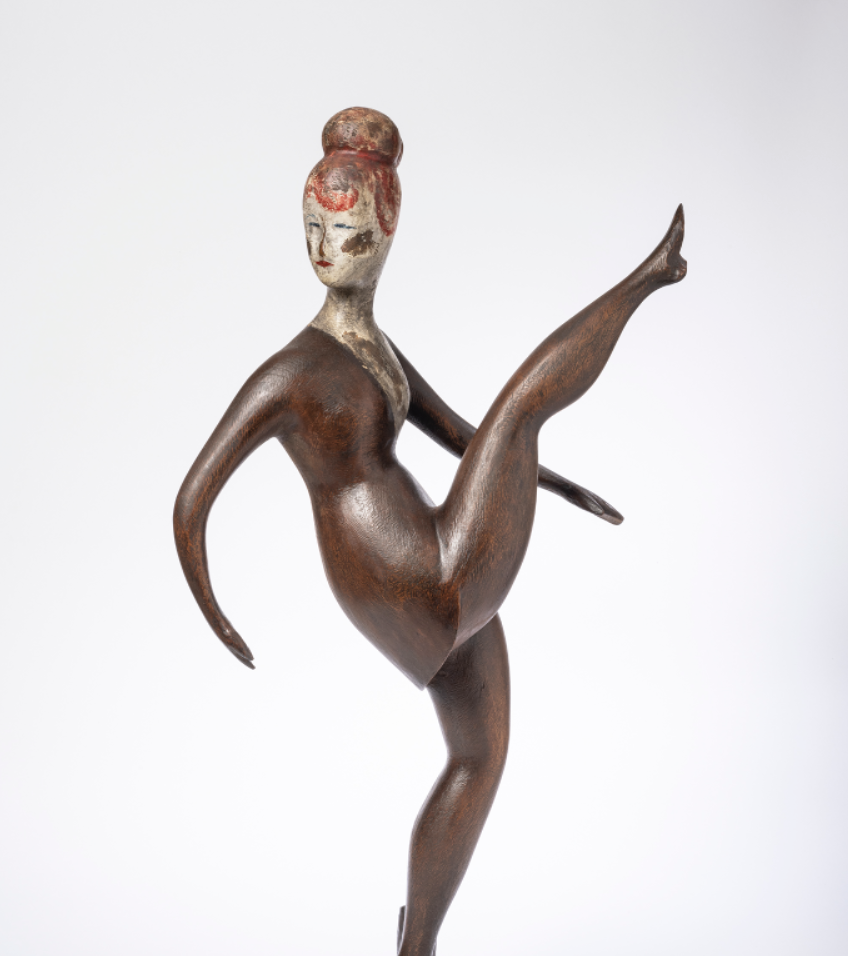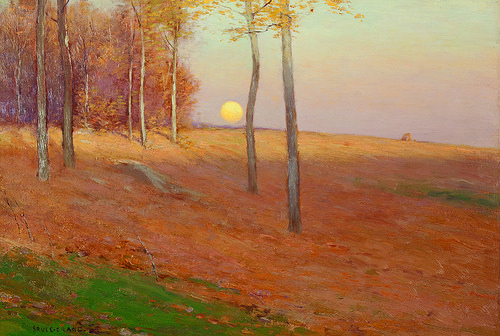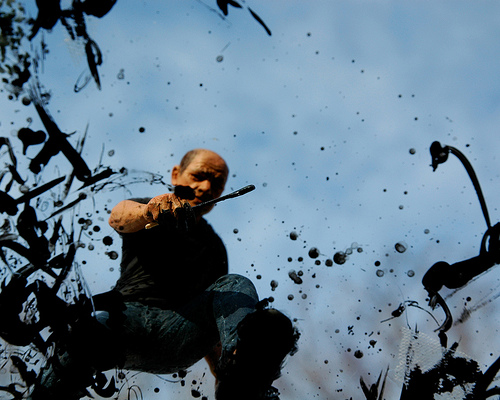
The beauty of bugs
“In the Midnight Garden” (detail from “Wonder’’), by Jennifer Angus, in her show “Jennifer Angus: The Golden Hour,’’ at the Bruce Museum, Greenwich, Conn., June 6-Sept. 8.
In Greenwich, displaying a violent world
“Samurai Helmet” (Japan’s Edo Period — 1603-1868), in the show “Arms and Armor: Evolution and Innovation,’’ at the Bruce Museum, Greenwich, Conn., March 7-Aug. 11.
The museum says:
‘‘‘Arms and Armor’ brings together historical weaponry and natural history specimens to highlight parallels between combat in the human and natural worlds.’’
‘Insistent materiality’
Work by the Modernist artist Elie Nadelman (1882-1946, American, born in Poland) in the show “Material Matters,’’ at the Bruce Museum, Greenwich, Conn., through Sept. 24.
The museum says:
“Nadelman is best known for his sculptural explorations of pure form. Melding classical source material and folk art, Nadelman’s sculptures range from idealized heads and animals to genre subjects drawn from everyday life, such as acrobats, circus performers, and dancers.
“Featuring more than twenty sculptures, this show showcases the artist’s experimentation with materials. In the early 1910s, he created idealized, classical heads in conventional materials such as bronze, marble, and stone. He expanded his practice by the end of the decade to include wood and plaster figural sculptures inspired by his experience of living in New York City. From the 1920s until the end of his career, Nadelman increasingly gravitated toward inexpensive, nontraditional materials. … The painted, textured, and weathered surfaces of Nadelman’s sculptures—their insistent materiality—are part and parcel of Nadelman’s modernity.’’
They’ve got us under their skin
“Roosterfish” (cleared and stained specimen), in the show “Under the Skin,’’ at the Bruce Museum, Greenwich, Conn., through July 19
— image courtesy of Dr. Matthew Girard.
The museum (in one of America’s richest towns) explains that “Under the Skin’’ features technological innovation and the beauty of nature. It includes real biological specimens as well as imagery created by technology, including CT scanning, infrared cameras, scanning electron microscopes and other devices undreamt of a decade ago. In ‘‘Under the Skin,’’ a roosterfish skeleton or the inner ear of a frog becomes a work of art. “Both in science and art can one find new discoveries by peering beyond the surface and searching for something deeper.’’
The Round Hill Congregational Church in Greenwich, part of the Round Hill Historic District, one of the richest parts of a very rich town.
— Photo by Magicpiano
'Water-painting' in Greenwich
“The End of Spring,’’ by Sun Wenzhang, in the show “Contemporary Artists/Traditional Forms: Chinese Brushwork,’’ through Dec. 8, at the Bruce Museum, Greenwich, Conn.
This exhibition shows 15 contemporary Chinese brushwork pieces for the first time in the U.S. The pieces, gifted to the Town of Greenwich through the 2019 U.S.-China Art and Culture Exchange, introduce viewers to the tools and concepts of brushwork. Chinese brushwork painting, also called water-painting, was developed in China during the Han Dynasty (220-589 A.D.) from calligraphy.
The grandeur of the cartoon art
“Prince Valiant,’’ by Hal Foster (January 21, 1951 © King Features Syndicate, Inc.) in the show “Masterpieces from the Museum of Cartoon Art’’ at the Bruce Museum, Greenwich, Conn., through April 20.
This exhibition, the museum says, displays over 100 original works celebrating the history of the cartoon, with everything from comic strips and editorial cartoons to caricature and animation. These works are on loan from The Ohio State University Billy Ireland Cartoon Library and Museum, which received them as a donation from the original Museum of Cartoon Art. The museum, founded in 1974 in Greenwich, was the first museum dedicated to collecting, preserving and exhibiting cartoon art in America.
They'll look less friendly soon
-- Photo by Joel Sartore/National Geographic Photo Ark
The Bruce Museum, in Greenwich, Conn., is hosting "National Geographic Photo Ark" through Sept. 2. "The National Geographic Photo Ark" is a multiyear project led by Photo Ark founder and National Geographic photographer Sartore.
The big dripper
"Jack the Dripper,'' by JOE FIG (courtesy of the artist and the Tierney Gardarin Gallery, New York), at the Bruce Museum, in Greenwich, Conn., in the current "Artists' Studios: Small-Scale Views'' show.
The "Jack'' here is, of course, famed abstract expressionist Jackson Pollock, whose violent alcoholism would have been denounced by the quiet and dignified alcoholics living in the famous rich precincts of Greenwich.










